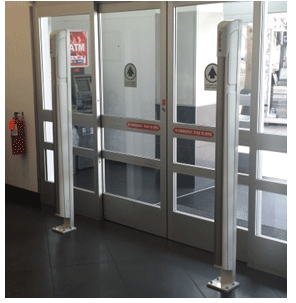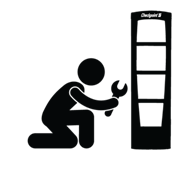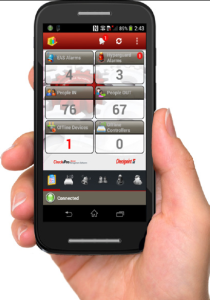 Are you confused about how to stop shoplifters? Many Retailers are. Often I hear something like “I have a CCTV camera system to stop shoplifters”. The reality is that shoplifters couldn’t care less. Cameras are a very tiny deterrent to a shoplifter. They know you do not have the time or payroll dollars to actively watch. And it is easy enough to create a diversion or simply take your merchandise and move to another location in your store that does not have camera coverage.
Are you confused about how to stop shoplifters? Many Retailers are. Often I hear something like “I have a CCTV camera system to stop shoplifters”. The reality is that shoplifters couldn’t care less. Cameras are a very tiny deterrent to a shoplifter. They know you do not have the time or payroll dollars to actively watch. And it is easy enough to create a diversion or simply take your merchandise and move to another location in your store that does not have camera coverage.
Keep in mind that Loss Prevention Systems also sells and installs cameras. So I have quite a bit of experience with this subject. Cameras are great tools but they have their limits. They are great for employee theft prevention and investigation, robbery prevention, burglary prevention and so on. But cameras are NOT proactive (passive)in the case of shoplifting. The shoplifter will be long gone by the time you figure out what is going on if at all.
However, a Checkpoint EAS system is PROACTIVE. It is working 24/7 even when you or your staff are not paying attention. Checkpoint Systems labels and hard tags are applied to your merchandise and if the thief tries to steal you products the Checkpoint System at the doors goes into alarm. We can even send an instant message to your cell phone or other mobile device at that time.
A Checkpoint System never takes a day off, is never sick, doesn’t want a pay raise, and doesn’t want a $15/hour minimum wage. Don’t you wish your staffing was that simple?
 EAS is great isn’t it? For the most part, if someone is stealing product “X,” you slap on a quick tag or label and you see a pretty substantial reduction in shrink (for the most part.… Live in the real world). As my LP career has progressed over the years, I’ve seen EAS change drastically. I’ve also seen what retailers apply EAS tags to change as well. Often times, I scratch my head in disbelief at the ideas that come out sometimes and others, I pull my hair out because we could have been more proactive with tag placement. I’ve also seen some fantastic ideas from my store teams on some not so standard tagging procedures.
EAS is great isn’t it? For the most part, if someone is stealing product “X,” you slap on a quick tag or label and you see a pretty substantial reduction in shrink (for the most part.… Live in the real world). As my LP career has progressed over the years, I’ve seen EAS change drastically. I’ve also seen what retailers apply EAS tags to change as well. Often times, I scratch my head in disbelief at the ideas that come out sometimes and others, I pull my hair out because we could have been more proactive with tag placement. I’ve also seen some fantastic ideas from my store teams on some not so standard tagging procedures. Everyone I know loves a good “dumb criminal” story. In fact, I can’t go a day without someone (store managers, district managers, executives, family…) asking me to tell a crazy shoplifting story. I have a top 10 list that I usually gravitate towards, but after yesterday, I may have to change it to a top 11.
Everyone I know loves a good “dumb criminal” story. In fact, I can’t go a day without someone (store managers, district managers, executives, family…) asking me to tell a crazy shoplifting story. I have a top 10 list that I usually gravitate towards, but after yesterday, I may have to change it to a top 11. Often overlooked for small businesses is the dire need for a suitable burglar alarm system. I talk about EAS placement and CCTV all the time. Those are rendered absolutely useless is someone busts in through the back door. If your burglar system isn’t up to standards, you run the risk of losing everything.
Often overlooked for small businesses is the dire need for a suitable burglar alarm system. I talk about EAS placement and CCTV all the time. Those are rendered absolutely useless is someone busts in through the back door. If your burglar system isn’t up to standards, you run the risk of losing everything.

 In the UK the number of women apprehended for shoplifting has increased, and has been linked to the fact that they do no longer get government benefits. In the United States shoplifting has increased with millions of dollars lost due to shoplifting every year, and the increase in prices has led many thieves to shoplift items that were unthinkable not too long ago. With the increase of beef prices for example, the number of thieves stealing package meat has reached an all time high. Stores across the country are even considering putting anti-theft packaging on their meat products to prevent thieves from shoplifting it.
In the UK the number of women apprehended for shoplifting has increased, and has been linked to the fact that they do no longer get government benefits. In the United States shoplifting has increased with millions of dollars lost due to shoplifting every year, and the increase in prices has led many thieves to shoplift items that were unthinkable not too long ago. With the increase of beef prices for example, the number of thieves stealing package meat has reached an all time high. Stores across the country are even considering putting anti-theft packaging on their meat products to prevent thieves from shoplifting it.
 Tagged merchandise, metal racks, and electrical wiring in this incidental detection zone can have an adverse effect on system performance. As a general rule, tagged merchandise should be equivalent of at least ¾ of you doorway aisle width away from each EAS pedestal. Example; tags should be no closer than 4.5 feet, in a 6 foot doorway. Where possible: metal racks and electrical wiring should be 5 feet or more away from the system.
Tagged merchandise, metal racks, and electrical wiring in this incidental detection zone can have an adverse effect on system performance. As a general rule, tagged merchandise should be equivalent of at least ¾ of you doorway aisle width away from each EAS pedestal. Example; tags should be no closer than 4.5 feet, in a 6 foot doorway. Where possible: metal racks and electrical wiring should be 5 feet or more away from the system.
 In the past when managers discussed employee theft they mostly talked about the tangibles. They talked about their problems with staff stealing product, supplies and money – the physical things which can be touched and seen.
In the past when managers discussed employee theft they mostly talked about the tangibles. They talked about their problems with staff stealing product, supplies and money – the physical things which can be touched and seen.